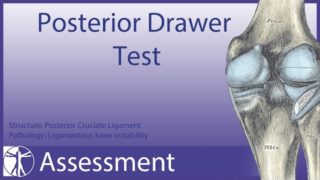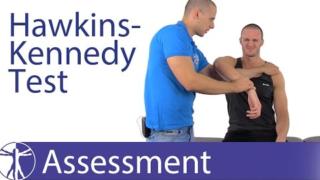Varus Stress Test (Knee) – Physical Exam
The varus stress test checks for joint laxity on the outside of the knee, which usually represents an injury to the lateral collateral ligament (LCL). Maneuver: With the patient lying on their back, position one hand at the joint line on the outer part of the knee. Fix the other hand on the ankle of […]
Varus Stress Test (Knee) – Physical Exam
Other Videos You Might Like:
Subscribe
Login
0 Comments




